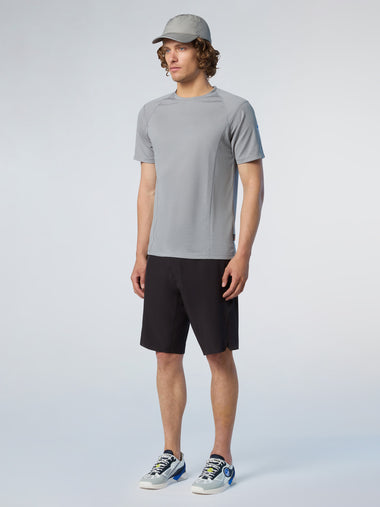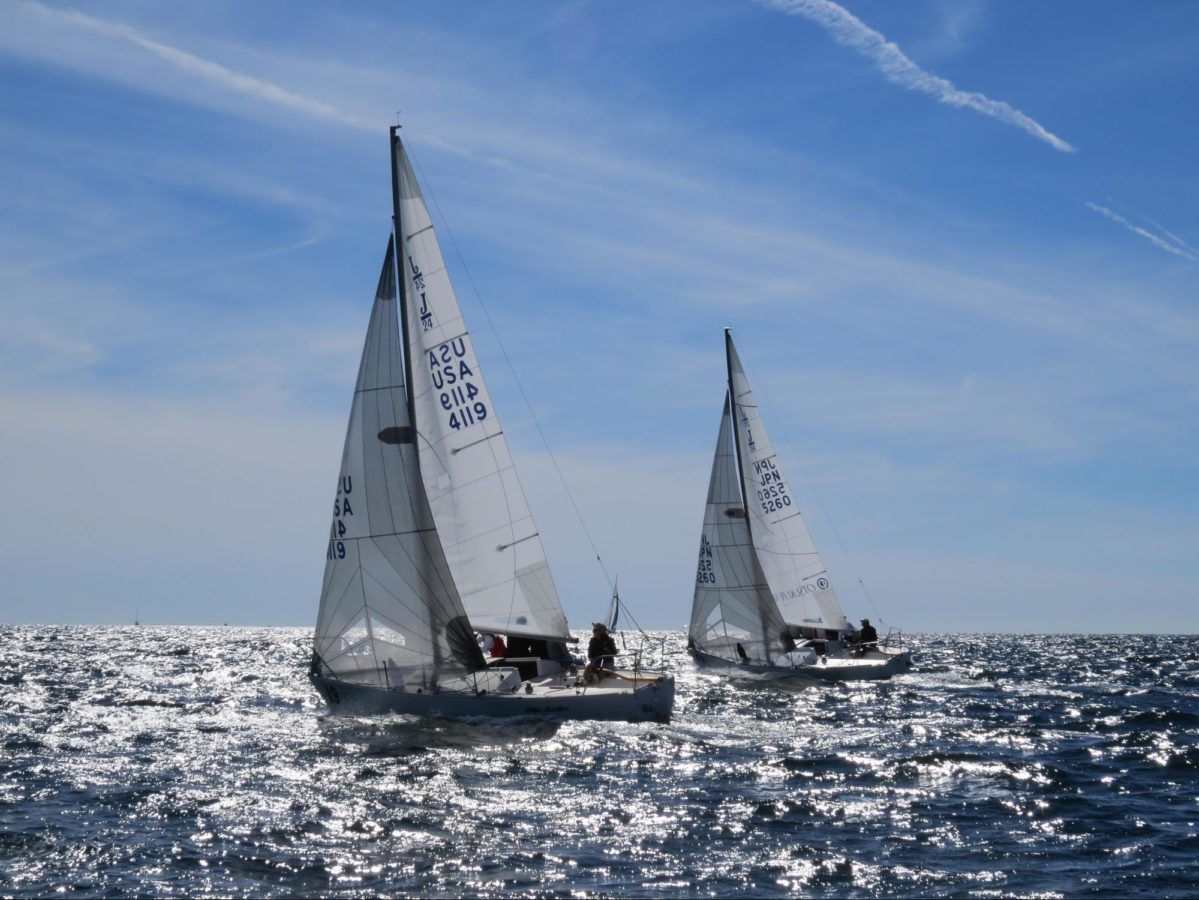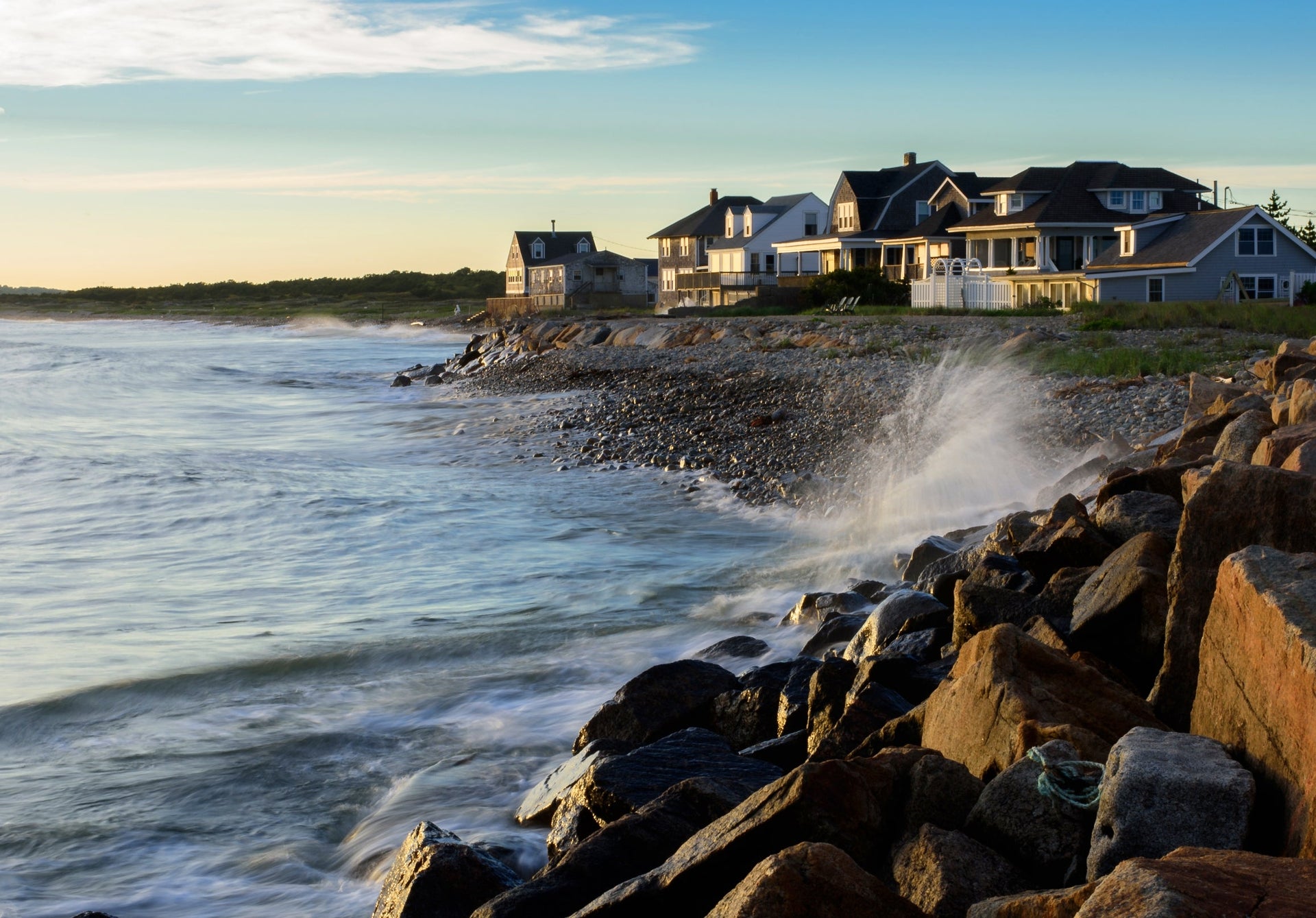J/24 US NATIONALS: LOCAL KNOWLEDGE
J/24 US NATIONALS LOCAL KNOWLEDGE
North Sails Expert Mike Ingham Explains What To Expect in Rochester

They call Rochester “Leftchester”. But of course it is not always that simple! We asked North Sails expert and Rochester local Mike Ingham what sailors should expect when they leave the docks at the 2019 J/24 US Nationals.
First, some basics:
- The predominant winds are in the West quadrant (WSW to NW).
- More often than not, systems come from the West quadrant, most often WSW
- The thermal is NNE
- The Genesee River flows North to the lake passing through Downtown Rochester before dropping considerably in altitude, passing RYC and emptying it’s silt into the lake
- The racing area is typically straight North or NE from the river. It’s not quite in a bay, but the land does indent like a very open bay, so there is land from West through South to East. From West through North to East is largely exposed
- The Lake is large and deep. It is around 350 miles long and 70 miles wide. The Niagara River flows into the lake on the SW corner and that water empties into the Atlantic by way of the St. Lawrence River in the NE corner
Here are some thoughts for each direction:
South Quadrant:
- It’s shifty in all of the South directions.
- The city of Rochester is ~8 miles up the Genesee and over 400 feet above the lake. That means the wind coming down that long hit is really unstable as it tries to mix in with the air below
- Heads up puffy lake sailing.
- Since the wind comes down that long hill, sometimes the puffs don’t hit the water so you don’t see them coming. Need to look and try and connect the puffs, but also need to be ready to react to whatever comes your way.
- Top of the course is the most shifty because it is closer to land making the last move to the weather mark and the first move out of it pretty critical
- All S directions (system driven)
- Flat water
SOUTHEAST
- Can happen, but is not common. Almost always associated with some rain and storm coming, but not always
- Can get a lift off the right shore, but not consistently
- Not a sustainable direction, it is unlikely to lock into the SE for more than half a day before something changes it
- Will rarely turn into a thermal because it is associated with bad weather disrupting any land convection.
SOUTH
- Relatively common system breeze
- Often warm clear weather
- Super shifty
- Rarely any geographic pattern (like get to a shore) because relatively square to the land
SOUTHWEST
- Relatively common system breeze
- Can be nice clear warm weather, or can be humid with t-storms rumbling through especially in the afternoon
- Can be very windy, but is relatively flat
- Very shifty puffy – heads up!

West Quadrant
- Common System driven
- Often windy, clear
- Relatively steady compared to the S winds, but still some shifts
- Can have T-storms associated, especially late in the day
- Out further in the lake, there can be big waves, but where we race there is a shore to the West, so that cuts down on big wave. Still choppy though.
- Often very favored left because of a lift off shore and flatter water
North, Northwest System
- N or NW System breeze about once a month lasting a few days (when it is windy)
- Cold wind from the North
- Often windy
- BIG steep waves (up to 10 foot)
- In the spring and summer, this is an oscillating breeze, so play the longer shifts, could be 5 min + oscillations
- But in the fall, since the lake is warm and the air cold, mixing makes for big holes and puffs
Northeast System
- Rare
- Unstable often rainy and stormy
- Does not last long
- Play shifts, but don’t expect a solid pattern
- Can be big waves if it does last a while because it has a very long fetch from the East end of the lake. But often does not last long enough to build up the really big waves
Northeast Thermal
- Almost always a Thermal Sea breeze
- Lite. It rarely gets into double digits
- Like any other thermal, need a temperature differential. The lake peaks at around 65deg so it can happen even on a cool day.
- The lake can “turn over”. Only the surface is warm and if the lower cool water mixes, it can get cool overnight to the mid 50’s
- Flat water
- Even though it is coming from the lake, it only goes out a few miles and does not have time/ distance to build up much chop
- Once filled in, left seems to work more than not
Current
- Surprisingly for a lake, you could see up to 1.5kts of current. Usually W to E parallel to the shore (but occasionally it inexplicably goes the other way –some kind of eddy).
- You can’t predict it but can easily tell which way and how strong by watching which way the river silt exits the river on your way out.
- It is caused by the bathtub effect, plus the flow of Niagara Falls (W to E). The lake is 300+ miles long and a low pressure system at one end or the other will suck the water that way, then when that pressure system goes away, the water “sloshes” back.
- It is relatively even over the race course, there is rarely any local eddy or current relief anywhere because the lake gets deep quickly. You have to go right near shore and we don’t typically race there.




















